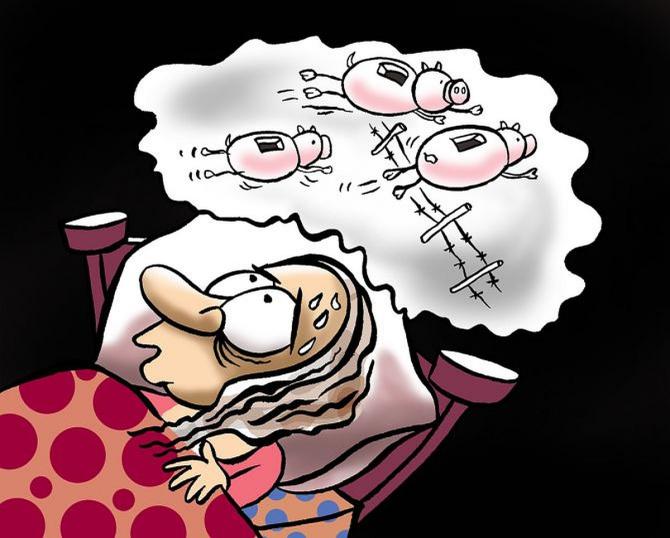The clarification comes in the backdrop of Reserve Bank of India data showing that household net financial savings rate is at its lowest in decades.
Ruchika Chitravanshi reports.

The finance ministry on Thursday sought to clarify that there was no distress in household savings and the data indicated that changing consumer preference for different financial products was the real reason for the change in the pattern of household savings.
The clarification comes in the backdrop of Reserve Bank of India data showing that household net financial savings rate is at its lowest in decades, at 5.1 per cent of GDP in FY23 compared to 7.2 per cent of GDP in FY22.
The divergence in the data for household gross financial assets and liabilities is not a cause for concern for the government, as the loans have largely been taken to buy real assets or automobiles, the finance ministry said.
In a series of tweets, the finance ministry said that 36 per cent of NBFC's outstanding retail loans are for the purchase of vehicles.
This was not a sign of distress on the part of households but of confidence in their future employment and income prospects.
The finance ministry said there has been a steady double-digit growth in loans for housing since May 2021.
So, financial liabilities have been incurred to buy real assets.
Vehicle loans have been growing at double digits year-on-year since April 2022 and more than 20 per cent year on year since September 2022.
"The household sector is not in distress, clearly. They are buying vehicles and homes on mortgages," the finance ministry said.
The finance ministry has also cited RBI data on personal loans to support its argument.
"Personal loans given by banks have several components.
"Key among them are real estate loans and vehicle loans.
"Both are collateralised.
"These two constitute 62 per cent of the overall personal loans by the banking sector. The other big categories are 'other personal loans' and credit card loans," the finance ministry said.
The ministry said that households added net financial assets of Rs 22.8 lakh crore in FY21, nearly Rs 17 lakh crore in FY22, and Rs 13.8 lakh crore in FY23.
"So, they added fewer financial assets to their portfolio than in the previous year and the year before, but it is important to note that their overall net financial assets are still growing," the finmin tweet said.
Economists noted that since interest rates for savings accounts have not been very attractive, people are investing more in equity and mutual funds.
"That people are less risk-averse and more financially literate than before has also pushed this trend," Madan Sabnavis, chief economist, Bank of Baroda, said.
Sabnavis said people are not taking loans for survival but to buy assets like homes or automobiles.
"That said, banks need to be careful about lending without collateral," he added.
Overall household savings at current prices which includes financial, physical and jewellery has grown at a CAGR of 9.2 per cent between 2013-14 and 2021-22.
Nominal GDP has grown at a CAGR of 9.65 per cent during the same period.
"Hence, Household Savings/Nominal GDP has remained constant from around 20.3 per cent to 19.7 per cent as of FY22.
"As RBI puts it, the household sector includes unincorporated enterprises or the quasi-corporate sector," the finance ministry said.
It also mentioned the role played by the non-banking financial companies in lending to the household sector.
"In FY22, NBFC had lent only Rs 21.4 thousand crore to the household sector.
"In FY23, they had lent nearly Rs 2.4 lakh crore. That is a whopping 11.2 times.
"That has set off alarm bells as commentators forgot that these are 'flow' numbers," the finance ministry clarified.
Overall, NBFC retail loans outstanding grew by 29.6 per cent from Rs 8.12 lakh crore in FY22 to Rs 10.5 lakh crore in FY23.
The finance ministry clarified that between June 2020 and March 2023, the stock of Household Gross Financial Assets went up by 37.6 per cent, and the stock of Household Gross Financial Liabilities went up by 42.6 per cent.
"(There is) no big difference between the two," the finmin said.











